 National Bank has just re-launched their All-in-One mortgage and it’s better than ever.
National Bank has just re-launched their All-in-One mortgage and it’s better than ever.
For those who aren’t familiar with it, the All-in-One combines checking, savings, and a mortgage all in one integrated account. This lets clients offset any debt in that account with incoming deposits–thus saving interest.
Here’s an example of how it works.
Suppose you deposit your regular paycheck into your All-in-One account. For the time that money sits there, it cancels out an equal amount of debt in the same account. Because your principle owing decreases, you therefore borrow less and pay less interest.
Since the All-in-One calculates interest daily, you save interest even if the incoming money stays in your account only for a few days.

The All-in-One has been a highly anticipated product for two big reasons. First, it’s the only product we know of that allows a discounted variable rate mortgage in conjunction with an all-in-one-type account. (More on this below)
Second, it’s the only fully readvanceable mortgage in Canada that: a) has a good discounted variable rate; and, b) is available through mortgage planners. Ever since Merix raised the variable rates on their HELOC, mortgage planners have met stiff competition from BMO and others offering readvanceable mortgages with low variable rates.
In any case, that’s now all changed. Moreover, there’s a lot more to like about the National Bank’s new All-in-One besides a good rate. For example:
- Principle payments are now fully readvanceable, even if you lock in a portion of your borrowing at a discounted fixed or variable rate. For every $1 of principle you pay off, your line of credit (LOC) limit now goes up $1 automatically.
- The All-in-One allows interest-only payments on the LOC portion. That can come in handy if cash gets tight.
- There is no minimum amount that you need to readvance.
- According to National Bank, readvancing is immediate. If you’re using the LOC for investing, that saves 2-3 days of waiting for the readvance to complete–which is often the case with certain competing products.
- The LOC portion is fully open (even if you hold your mortgage in it)
- You can have up to 99 sub-accounts in the LOC. Ninety nine may be overkill but multiple sub-accounts are nonetheless handy for separating personal borrowing from investing or cash damming.
- The All-in-One lets you borrow up to 90% of the value of your home (95% loan-to-value is coming in May)
- You get one simple checking, savings, and mortgage statement.
- You can access funds in your sub accounts via: cheques, automated banking machines (ABMs), branch withdrawals, online banking, and Interac direct payment.
- Customers get several free banking services including: unlimited Interac, debit, phone and web banking plus use of National Bank, HSBC, Canadian Tire and Credit Union ABM’s at no cost.
On the “cons” side, there are also three limitations that we can see:
- The All-in-One has two borrowing options: a) the open LOC portion; and, b) the closed locked-in portions. Locked-in portions unfortunately do not get “all-in-one” treatment. In other words, if you lock in your mortgage at a discounted interest rate, you can’t offset the principle on that debt with your incoming deposits. If you want the benefit of offsetting the principle on your mortgage, your mortgage has to be placed in the LOC portion. The LOC portion is always at prime rate, however–or 5.25% as of today. (Note: We’ll compare the benefits of the each “portion” in an upcoming story)
- You generally can’t switch into a readvanceable mortgage like this without paying legal and appraisal fees (exceptions sometimes apply–contact a mortgage planner for details)
- Additional sub accounts are $2.50 a month. The first is free. (This isn’t really a negative because most banks charge $10 a month for all the freebies you get with NBC sub-accounts.)
All told, the All-in-One is one of the most powerful and flexible mortgage products on the market. It’s an excellent choice for anyone that can make use a growing cash reserve. This includes the self-employed, rental property owners, investors, and homeowners needing a ready source of low-cost funds.



What kind of discount are they offering with their discounted variable?
What is your take on United First Financial’s Ufirst Mortgage?
Hi FT,
I haven’t seen NBC’s new rate sheet but I heard through the grapevine it might be prime – .50.
Sam,
UFirst’s Money Merge Account is software that replicates the all-in-one concept. The company is just starting to sell it in Canada. From what we’ve seen so far, it has various pros and cons. We’ll touch on them in a future story once we obtain additional information from the company.
Cheers,
Rob
Rob & Melanie:
Have you heard any updates on the launch date for FirstLine’s variable Matrix mortgage?
KV
Hi KV,
We haven’t. Last we heard it was slated for May.
Cheers,
Rob
Has anyone compared this point for point against the M1?
It sounds like a person with an M1 could benefit by switching if they don’t mind locking in a portion on the mortgage.
I just checked NBC’s rate sheet and the AIO is at Prime with no discount. Do they negotiate to be competitive with the market?
Hi dayLateDollarShort,
I haven’t seen a comparison of the M1 and All-in-One apart from our readvanceable mortgage comparison.
Hi Cannon,
As of today you can get a better deal than prime on the All-in-One by going through a mortgage planner. I’m not sure what their policy is on negotiating at the branch level. Most banks will give you something off, but these days funds are tight for variable-rate mortgages.
Cheers,
Rob
I’m tring to get something better than prime – 0.5 with NBC on the variable mortgage part of an All-In-One but they are giving me a hard time. Anyone got better than prime – 0.5 ?
We hear the All-in-One HELOC rate is going up to prime + 1% on Sunday Nov. 30, 2008, at 11:59pm ET.
If you’ve been thinking of getting an All-in-One try to find a mortgage planner to submit your application by Sunday night.
May 2011 – our mortgage broker got us an NBC AIO with mortgage portion at variable rate prime – .8% and HELOC portion at variable rate prime + .5%. Both rates are much lower than posted rate for AIO: 4% (prime + 1%).